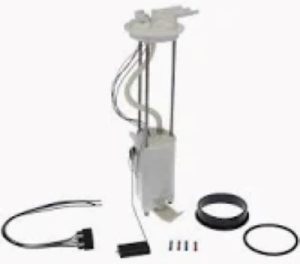There are key factors by which fuel pumps are measured to determine appropriateness for a specific engine and desired performance need. For starters, a key parameter is the flow rate which is usually specified in units of liters per hour (LPH). Normal fuel pumps fitted to any car which are not a fully blown race engine can achieve 150-200 LPH, but to even fuel the most complicated of performance engines you need one that is over 300 LPH. They keep these engines fed with fuel while pushing hard during spirited driving with their high flow rates.
Another important specification is the pressure rating, which is commonly expressed in pounds per square inch (PSI). Most standard pumps work at 40-60 PSI, and high-performance gas turbines may require the pump to output more than 100 PSI. It prevents the high-powered unit from receiving the wrong fuel force at the right point for perfect combustion. For instance, Bosch makes pumps good to 120 PSI, more than suitable for turbocharged engines that require constant flow.
Everyone knows voltage is important, 12 volts is common on most vehicles with anything below 10 volts reducing efficiency. This will lead to engine problems, especially with demand engines because at a voltage drop at the pump, the flow rate can even fall up to 30%. Performance pumps can also pull more amps; high-flow performance pumps draw 10-12 amps, while standard pumps pull 5-6 amps, affecting the electrical load of the vehicle even more.

Durability is yet another measure — the average pump is designed to work for 100,000 miles or so, though things like fuel type can vary how long it lasts. Diesel fuel pumps, for example, have stouter components than gasoline pumps so they tend to have a greater utilitarian life as compared to gasoline pumps. Delphi and similar companies report 50 percent longer life when the right pump is used with the right fuel type.
Fuel compatibility is another important aspect to consider since some fuels are corrosive on pumps for which they are not intended (25% reduction in efficiency). Lastly, noise level can also play a role, particularly for consumer vehicles which prioritize comfort over performance. Walbro pumps, for example, are common in the hot-rod scene and quite noisy, but in the race world, noise is acceptable.
These measurements ensure that a Fuel Pump specific to a vehicle will perform at levels aligned with the engine, to meet a reliability and durability standard for years of use.